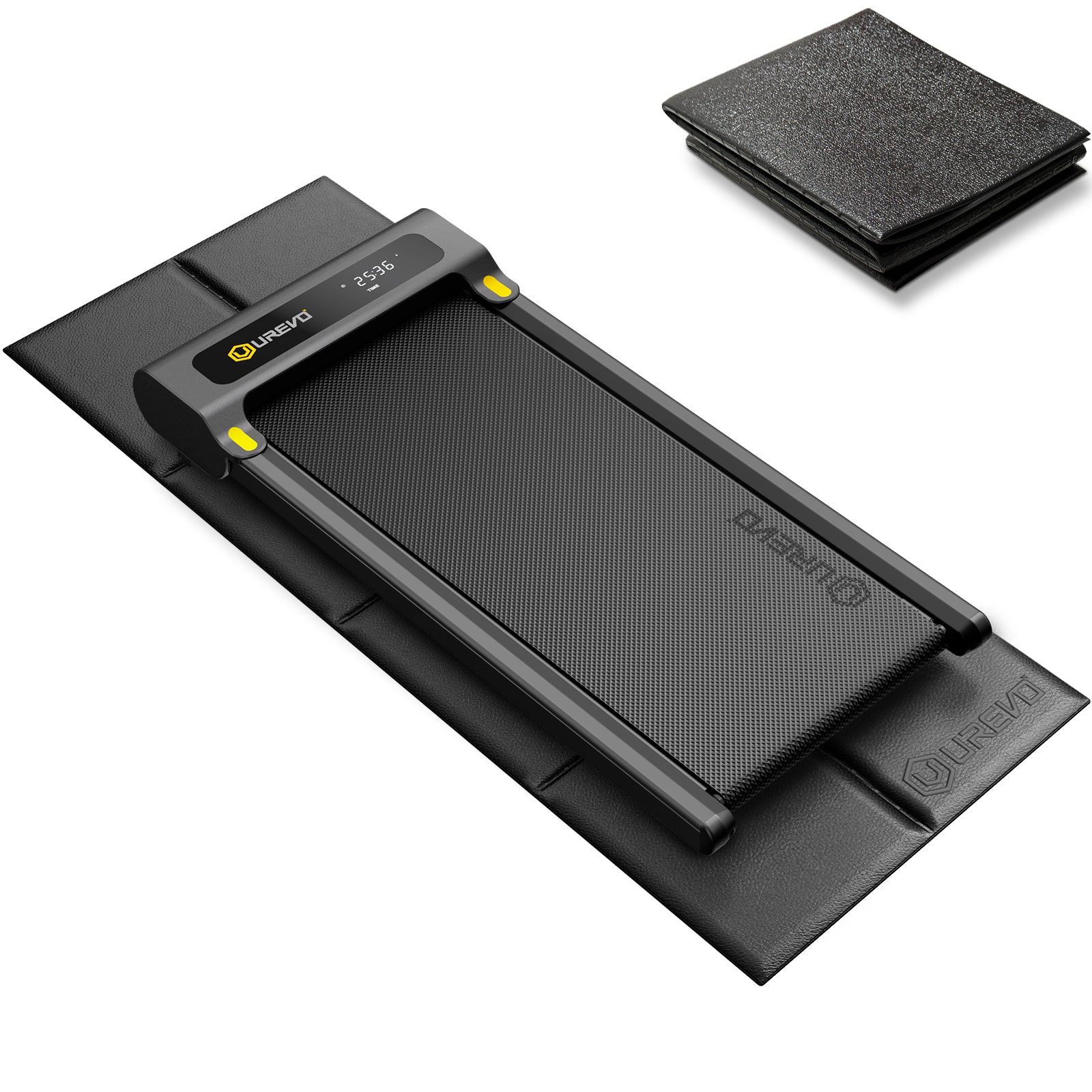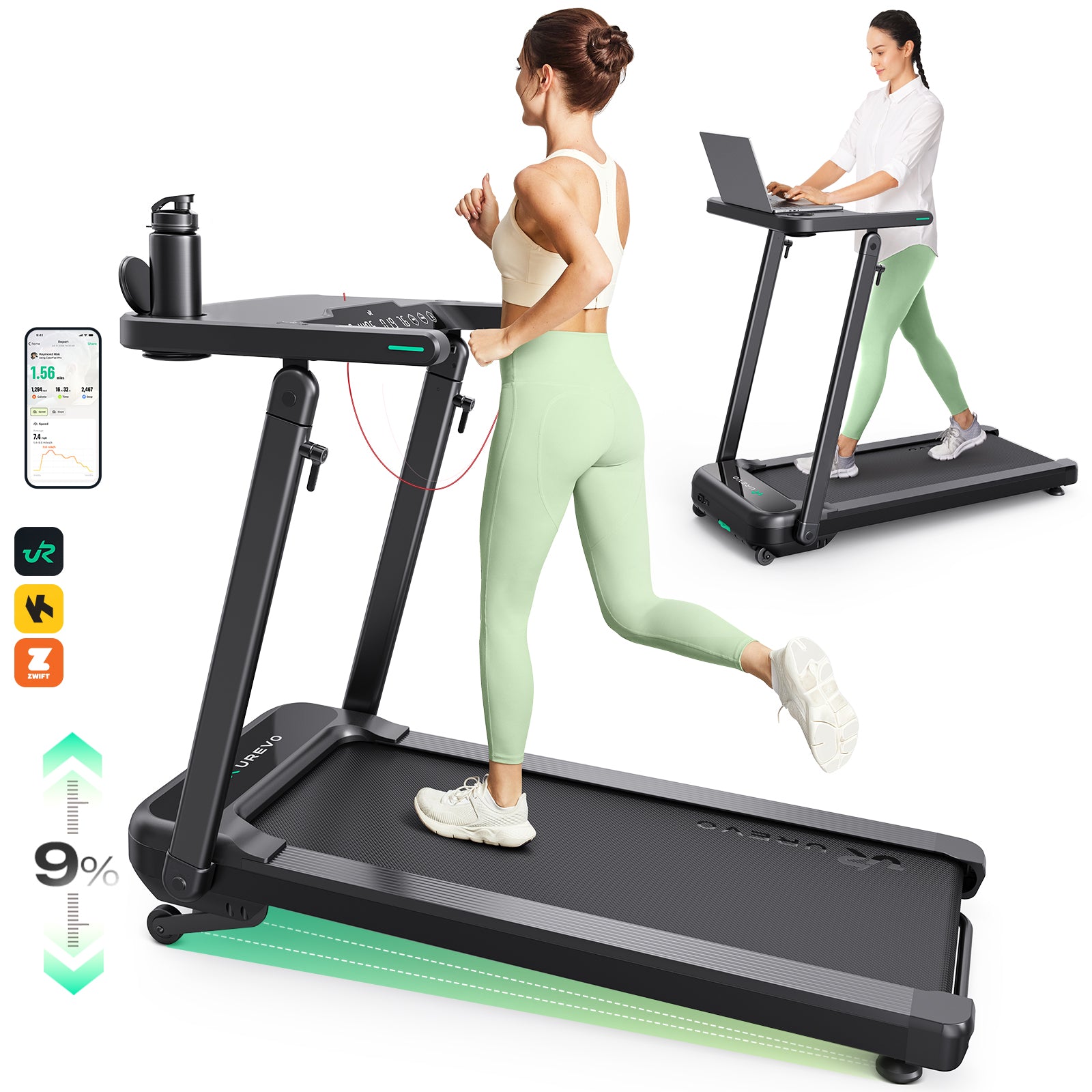Attention Deficit Hyperactivity Disorder (ADHD) can pose daily challenges, impacting focus, mood, and productivity. Incorporating physical activity into one’s routine is a well-recognized approach to managing these symptoms. This article explores the potential benefits of using an under desk treadmill to help individuals with ADHD enhance their concentration, mood, and overall cognitive functions through consistent, moderate exercise.
On ADHD
ADHD is a neurodevelopmental condition characterized by patterns of inattention, hyperactivity, and impulsivity that are more frequent and severe than typically observed in individuals at a comparable level of development. This condition affects not only the ability to maintain attention but also controls over activity levels and impulse responses. It can significantly impact various aspects of daily life, including work, relationships, and self-esteem.

The Benefits of Movement for ADHD
The benefits of physical activity for ADHD, as outlined below, are well-supported by scientifical findings.
- Modulation of Neurotransmitters: The paper details that physical exercise can increase central arousal and stimulate the release of neurotransmitters such as dopamine, epinephrine, norepinephrine, and serotonin. These neurotransmitters play significant roles in the management of ADHD symptoms. The elevation in neurotransmitters like dopamine and norepinephrine is particularly critical because they are directly implicated in attentional processes and behavioral inhibition, which are often problematic for those with ADHD. Stimulants, which are a common treatment for ADHD, target these same pathways to alleviate symptoms, suggesting that exercise could provide a similar benefit in a natural and non-pharmacological way.
- Improvements in Executive Functions and Symptom Reduction: The review highlights several studies demonstrating that both acute and regular exercise lead to improvements in neurobehavioral functions among individuals with ADHD. These improvements include reduced impulsivity and hyperactivity, better attention, and enhanced executive functioning. Such changes are crucial for improving daily functioning and managing core symptoms of ADHD.
- Enhancement of Cognitive Performance: Regular physical activity has been shown to foster cognitive performance through enhancements in executive function, including better problem-solving, planning, and flexibility. The neurophysiological changes induced by exercise, such as increased dopamine and norepinephrine in the prefrontal cortex, are believed to underpin these improvements.
- Reduction in Restlessness and Promotion of Mental Focus: Exercise has a stabilizing effect on mood and can reduce restlessness, a common issue in ADHD. The rhythmic, repetitive movements involved in many forms of exercise can also promote a mental state conducive to focus and meditative-like states, helping individuals with ADHD maintain attention on tasks.
- Long-Term Benefits and Structural Changes in the Brain: Studies cited in the paper indicate that long-term physical activity can lead to structural changes in the brain, such as increases in gray matter in frontal and hippocampal areas. These areas are critical for attention and executive function, suggesting that sustained exercise could lead to long-term improvements in ADHD symptoms and cognitive function.
In summary, regular exercise can modulate neurotransmitter levels, improve cognitive and executive functions, and even lead to structural changes in the brain, all of which contribute to managing ADHD symptoms and enhancing overall well-being.
Features of Under Desk Treadmills
An under desk treadmill, sometimes known as a walking pad for under desk, is featured by:
- Compact and Low-Profile Design: Specifically engineered to be slim and unobtrusive, these treadmills fit neatly under most standard desks, maximizing usable space in smaller or shared office environments.
- Slim Platform: Features a reduced footprint compared to traditional treadmills. The slim platform helps in maintaining a minimalistic and non-cluttered workspace.
- Quiet Operation: Equipped with motors designed to operate quietly to minimize noise, making it ideal for office settings where noise can be a distraction to others.
- Adjustable Speed Settings: Users can easily adjust the walking speed, allowing for a range of light to moderate pacing that can be adapted based on the user's task focus or physical fitness level.
- Space-Saving Features: Often foldable or with a low-profile design that fits well in tight spaces. This design consideration is key for urban offices or home workspaces where space is at a premium.
- Digital Tracking Features: Some models include built-in digital displays or apps that monitor and record fitness metrics such as distance walked, calories burned, and walking time. This technology helps users maintain their health and fitness goals without needing additional devices.
- Integration with Sedentary Workflows: Designed to encourage movement and physical activity in settings where one might otherwise remain sedentary for extended periods. This helps increase overall physical activity levels throughout the day, which can improve health and productivity.
These features combine to make under desk treadmills a practical fitness solution that accommodates the constraints and needs of modern office environments.

Can an Under Desk Treadmill Help with ADHD?
Under desk treadmills can provide a discreet, convenient, and effective way to harness the benefits of regular physical activity to help manage ADHD symptoms. This tool enables users to integrate movement into their daily routines, thereby supporting better focus, mood stabilization, enhanced cognitive function, and effective stress management.
Enhancing Focus and Concentration
The use of an under desk walking treadmill offers a unique way to improve concentration and focus, particularly for individuals with ADHD. The continuous, rhythmic motion of walking is known to enhance neural activity associated with meditative states. This rhythmic walking can help minimize the common distractions that interrupt the workflow of someone with ADHD, providing a steady, predictable stimulus that can help sustain attention on work tasks. Additionally, the physical activity helps in the release of neurotransmitters like dopamine, which is often at suboptimal levels in individuals with ADHD. This increase can directly improve attention mechanisms and cognitive processing speeds.
Improving Mood and Reducing Anxiety
Regular access to an under desk treadmill allows for spontaneous physical activity, which is crucial for mood regulation in individuals with ADHD, who may experience more severe and frequent mood swings. The act of walking increases the production of endorphins, known as "feel-good" hormones, which naturally elevate mood and bring about feelings of happiness and well-being. This biochemical boost can be essential for reducing anxiety levels, which are often elevated in ADHD. The consistent and gentle activity facilitated by a treadmill under the desk ensures that these mood benefits can be achieved regularly, helping to maintain a more stable emotional state throughout the workday.
Increased Cognitive Performance
Moderate exercise facilitated by an under desk treadmill has been shown to enhance various cognitive functions such as memory, problem-solving skills, and decision-making abilities. For individuals with ADHD, the immediate availability of a walking pad under the desk offers a practical solution to engage in mild exercise. This activity stimulates cerebral blood flow and can lead to better brain function, thereby improving cognitive engagement and productivity. Regular intervals of walking throughout the day can help keep the mind sharp and more focused on professional or educational tasks.
Stress Management
Walking on an under desk treadmill serves as an effective stress relief tool, which is particularly beneficial for individuals with ADHD, who may struggle with higher stress levels due to the daily challenges of their condition. The physical activity helps mitigate stress by reducing the body's stress hormones, such as adrenaline and cortisol, and by promoting the relaxation response in the body. Additionally, the inclusion of regular walking breaks can help decompress mental load and provide a mental reset, which is essential for maintaining long-term productivity and focus in stressful work or academic environments.

Tips for Using an Under Desk Treadmill Effectively
- Start Slow and Build Up: For those new to using an under desk treadmill, it is advisable to start with slow speeds to get accustomed to multitasking while walking. Gradually increasing the pace and duration of walking sessions can help build stamina and comfort.
- Set Up Your Workspace: Optimizing the workspace for treadmill use is crucial. Ensure that the desk height is adjustable for a comfortable posture during walking. Position essential tools within easy reach, and consider using a wireless keyboard or a remote mouse to facilitate ease of movement.
Final Thoughts
Integrating an under desk treadmill into the daily routine offers a promising adjunct therapy for managing ADHD. It not only helps mitigate the symptoms associated with ADHD but also contributes to overall health and productivity. When used judiciously, this tool can be a step towards a more focused, energetic, and balanced life for those affected by ADHD.













